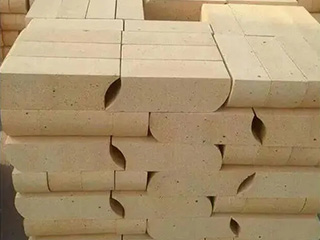High alumina bricks are a type of refractory brick that are commonly used in high-temperature industrial applications. They are made from bauxite, a type of clay mineral that contains aluminum oxide (Al2O3). High alumina bricks are known for their excellent thermal shock resistance, high temperature resistance, and good chemical stability. However, like all materials, they also have their advantages and disadvantages. Here are some of the advantages and disadvantages of high alumina bricks for industrial applications:
Advantages:
1.High temperature resistance: High alumina bricks have a high melting point and can withstand temperatures of up to 1800°C. This makes them ideal for use in high-temperature industrial applications, such as furnaces, kilns, and incinerators.
2.Excellent thermal shock resistance: High alumina bricks have excellent thermal shock resistance, which means they can withstand rapid changes in temperature without cracking or breaking. This is important in industrial applications where the temperature of the equipment can fluctuate rapidly.
3.Good chemical stability: High alumina bricks are chemically stable and can resist corrosion from a wide range of chemicals, including acids and alkalis. This makes them suitable for use in harsh chemical environments, such as in the chemical processing industry.
4.Low thermal conductivity: High alumina bricks have a low thermal conductivity, which means they can insulate against heat transfer. This is important in industrial applications where insulation is needed to maintain consistent temperatures and conserve energy.
5.Durability: High alumina bricks are durable and have a long lifespan, which reduces the need for frequent maintenance and replacement.

Disadvantages:
1.High cost: High alumina bricks are more expensive than other types of refractory bricks, such as fireclay bricks. This can make them less attractive for industrial applications where cost is a major factor.
2.Low porosity: High alumina bricks have a low porosity, which means they are not very permeable. This can be a disadvantage in some industrial applications where permeability is important, such as in catalytic converters.
3.Low thermal shock resistance in reducing atmospheres: In reducing atmospheres, high alumina bricks can have lower thermal shock resistance compared to other refractory materials.
4.Not suitable for acidic environments: High alumina bricks are not suitable for use in highly acidic environments. In such environments, the bricks can react with the acid and dissolve.
5.Brittle: High alumina bricks are relatively brittle and can crack or break if subjected to impact or stress.
In conclusion, high alumina bricks are a popular choice for high-temperature industrial applications due to their high temperature resistance, excellent thermal shock resistance, good chemical stability, low thermal conductivity, and durability. However, they also have some disadvantages, such as their high cost, low porosity, and brittleness. When selecting high alumina bricks for industrial applications, it is important to consider their advantages and disadvantages in the specific application and operating conditions. A thorough understanding of these factors can help ensure the proper selection and effective use of high alumina bricks in industrial applications.
Contact: Mgr. Han
Phone: 0086-13589497465
Email: 1255953279@qq.com
Add: Industrial Area of Lingzi Town,Zichuan District,Zibo City, Shandong,China